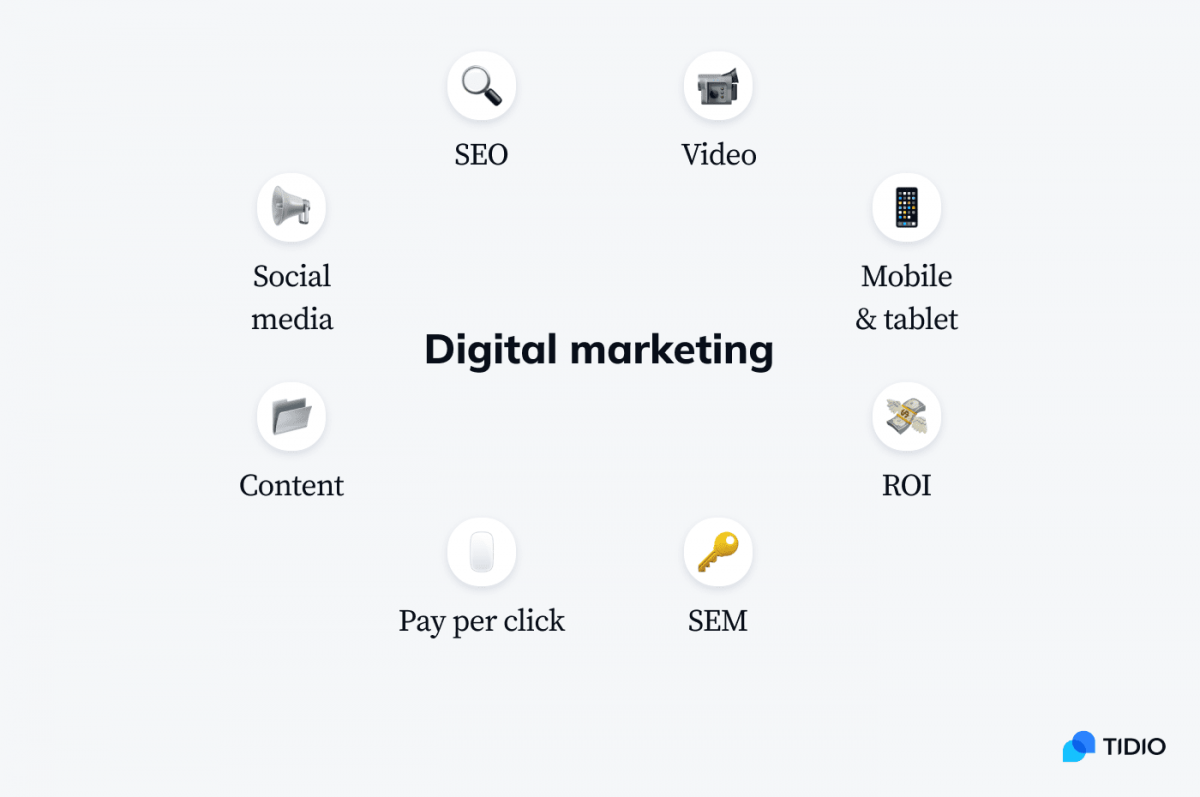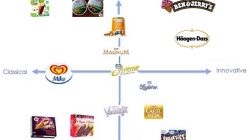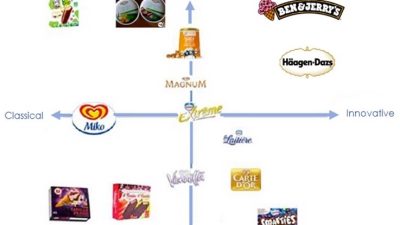Optimizing Online Sales Channels for High Demand Electronic Products is essential for businesses aiming to thrive in today’s digital marketplace. With electronics continuously rising in demand, understanding the various online sales channels becomes crucial to tapping into your target audience effectively. This exploration covers the significance of these channels, their types, and the key factors that enhance their effectiveness, ensuring your electronic products make a lasting impression in the marketplace.
From identifying the right platforms to develop tailored marketing strategies, each step plays a pivotal role in maximizing your sales potential. By analyzing consumer behavior and preferences, you can create personalized experiences that resonate with your audience while leveraging the latest marketing techniques to drive engagement and boost conversions.
Understanding Online Sales Channels
In today’s digital landscape, online sales channels are critical pathways through which electronic products reach consumers. These channels allow businesses to maximize their market presence, engage with customers, and ultimately drive sales. The rapid growth of e-commerce has made it imperative for companies to adapt and optimize their strategies for selling products online.Online sales channels encompass a variety of digital platforms that facilitate the buying and selling of products over the internet.
Each channel has its unique characteristics and can significantly influence a product’s market performance. For high demand electronic products, understanding the different types of online sales channels and their effectiveness is essential for achieving successful sales outcomes.
Types of Online Sales Channels
There are several online sales channels that businesses can utilize to market and sell high demand electronic products. Identifying the right mix of channels can enhance visibility and accessibility for consumers.
- E-commerce Websites: These are dedicated websites where brands showcase their products. They provide consumers with a direct shopping experience, often featuring detailed product descriptions, images, and customer reviews.
- Marketplaces: Platforms like Amazon, eBay, and Walmart offer sellers the opportunity to list their products alongside those of competitors, providing a broader audience reach.
- Social Media Platforms: Sites such as Facebook, Instagram, and TikTok have integrated shopping features, allowing brands to showcase products directly to their followers, effectively engaging users through visual content.
- Mobile Apps: Retailers often develop proprietary apps that facilitate easy browsing and purchasing, enhancing user experience through personalized recommendations and promotions.
- Affiliate Marketing: This channel allows businesses to partner with influencers and content creators who promote products on their platforms for a commission, tapping into their established audiences.
Key Factors Contributing to Effectiveness
The effectiveness of online sales channels is influenced by various factors that determine how well a business can connect with its target market. Businesses must consider these elements to enhance their online performance and increase sales.
- Target Audience Insights: Understanding the preferences and behaviors of the target demographic is crucial for tailoring marketing messages and product offerings.
- User Experience: A seamless and intuitive website or app design can significantly impact conversion rates. Factors such as site speed, navigation ease, and mobile compatibility play a vital role.
- and Visibility: Implementing effective search engine optimization strategies ensures that products appear in relevant search results, increasing organic traffic.
- Customer Service: Providing excellent customer support, including live chat options and easy return policies, helps build trust and encourages repeat purchases.
- Promotional Strategies: Utilizing effective marketing strategies, such as targeted ads and social media promotions, can drive traffic and maximize sales potential across various channels.
“The right online sales channel can transform high demand electronic products into household names.”
Target Audience Analysis: Optimizing Online Sales Channels For High Demand Electronic Products
Understanding your target audience is vital for the success of electronic product sales. Identifying who your customers are allows businesses to tailor their marketing strategies effectively, ensuring a direct connection with consumer needs and preferences. This analysis helps in optimizing product offerings, messaging, and promotional efforts, leading to increased sales and customer loyalty.To effectively identify target audiences for electronic products, several methods can be employed.
Utilizing data analytics tools to gather demographic information, such as age, gender, location, and purchasing power, is essential. Additionally, social media insights can provide valuable information regarding consumer interests and behaviors. Surveys and feedback forms can also aid in understanding customer preferences directly from the source, allowing for a more nuanced approach to marketing.
Methods for Identifying Target Audiences
A multifaceted approach can be beneficial in identifying target audiences. Here are some effective methods:
- Market Research: Conducting thorough market research using primary and secondary sources can help in gathering insights about potential customers and market trends.
- Analytics Tools: Utilizing platforms like Google Analytics and social media insights to track user behavior and demographics can provide a clear picture of your audience.
- Competitor Analysis: Reviewing competitor strategies and their target demographics can uncover segments you may have overlooked and identify potential gaps in the market.
Analyzing consumer behavior and preferences requires a deep dive into the data collected. By examining purchasing patterns and feedback, businesses can gain insights into what drives customer decisions. Evaluating this data helps in understanding not only what products are popular but also the emotional and rational factors influencing purchases.
Techniques for Analyzing Consumer Behavior
Engaging in detailed analysis of consumer behavior is pivotal in shaping marketing strategies. Consider these techniques for effective analysis:
- Behavioral Segmentation: Classifying consumers based on their buying behavior, such as brand loyalty, purchase frequency, and product usage, allows for targeted marketing strategies.
- Customer Surveys: Sending out surveys to existing customers can yield direct insights into their preferences, helping you adjust your offerings accordingly.
- Social Listening: Monitoring social media platforms for mentions and discussions around your products can provide real-time insights into consumer sentiments and trends.
Segmenting audiences is crucial for personalizing marketing efforts. By distinguishing between different consumer groups, businesses can create tailored messages that resonate with specific segments, increasing engagement and conversion rates.
Approaches for Segmenting Audiences
Segmentation strategies enhance the effectiveness of marketing campaigns. Here are some approaches:
- Demographic Segmentation: This involves dividing the audience based on age, gender, income, and education level, enabling targeted marketing that speaks to specific groups.
- Psychographic Segmentation: Focusing on consumer lifestyles, values, and interests provides insights into why consumers buy, allowing for emotionally resonant marketing messages.
- Geographic Segmentation: Understanding where your customers live can aid in customizing promotions based on regional trends and preferences.
By implementing these methods and techniques, companies can effectively target their marketing strategies, ensuring they meet the needs of their audience and drive sales of high-demand electronic products.
Platform Selection and Optimization
Selecting the right online platform for selling high-demand electronic products is crucial for maximizing sales and enhancing customer experience. With numerous e-commerce platforms available, businesses must consider various factors to identify the best fit for their product offerings.To effectively evaluate different online platforms, a comprehensive checklist can be instrumental. This checklist should encompass essential features that align with product requirements, target audience, and business goals.
Checklist for Evaluating Online Platforms
The following checklist provides a guideline to assess various online platforms that cater to electronic product sales. Utilizing this checklist ensures that critical elements are not overlooked in the selection process.
- Platform Fees: Analyze transaction fees, monthly subscriptions, and any additional costs associated with the platform.
- Customization Options: Evaluate the extent to which the platform allows for branding and product display customization.
- User Experience: Assess the ease of navigation and usability for both sellers and buyers on the platform.
- Payment Options: Confirm the variety of payment methods supported for seamless transactions.
- Integration Capabilities: Check if the platform integrates with existing inventory, shipping, and accounting systems.
- Customer Support: Investigate the availability and quality of customer support services provided by the platform.
- Traffic and Audience: Research the platform’s existing customer base and traffic statistics to gauge potential reach.
Best Practices for Optimizing Product Listings
Optimizing product listings on e-commerce platforms significantly influences visibility and conversion rates. Implementing best practices can enhance product appeal, leading to increased sales.
- High-Quality Images: Use multiple high-resolution images showing various angles and features of the electronic product.
- Compelling Titles: Craft descriptive and -rich titles that accurately reflect the product.
- Detailed Descriptions: Provide thorough descriptions that highlight key features, specifications, and benefits.
- Customer Reviews: Encourage customer feedback and incorporate reviews to build trust and credibility.
- Pricing Strategy: Set competitive prices based on market research and competitor analysis.
- Techniques: Implement search engine optimization techniques in product descriptions to improve visibility.
Comparison of Popular E-Commerce Platforms
Understanding the features of popular e-commerce platforms can aid in making an informed choice. Here’s a comparative analysis of notable platforms that support electronic product sales:
| Platform | Key Features | Ideal For |
|---|---|---|
| Shopify | Easy-to-use interface, extensive app store, customizable templates | Small to medium-sized businesses seeking flexibility and ease of use |
| Amazon | Vast customer base, trust factor, FBA (Fulfillment by Amazon) | Businesses looking for a ready-made audience and fulfillment services |
| eBay | Bid and sell options, auction-style listings | Sellers of unique or second-hand electronic products |
| WooCommerce | Highly customizable, integrates with WordPress | Businesses with existing WordPress sites seeking greater control over their store |
Marketing Strategies
In the competitive landscape of high-demand electronic products, innovative marketing strategies are essential for capturing customer attention and driving sales. Businesses must leverage various digital marketing avenues to effectively promote their products, ensuring they reach the right audience at the right time.The role of social media in enhancing visibility and driving sales for electronic products cannot be overstated. Social platforms serve as dynamic environments where brands can engage with consumers, showcase new products, and build lasting relationships.
The interactive nature of social media allows brands to share compelling content that resonates with their target audience, converting engagement into sales.
Effective Online Marketing Strategies, Optimizing Online Sales Channels for High Demand Electronic Products
To successfully market electronic products, businesses can implement a variety of strategies that cater to the unique characteristics of their audience. Here are some effective methods:
- Content Marketing: Creating informative and engaging content such as blogs, videos, and tutorials that highlight product features and benefits can help educate consumers and enhance brand authority.
- Email Marketing: Personalized email campaigns targeting specific customer segments can nurture leads and encourage repeat purchases, often yielding high ROI.
- Search Engine Optimization (): Optimizing product listings and website content for search engines increases visibility, driving organic traffic to e-commerce platforms.
- Paid Advertising: Utilizing pay-per-click (PPC) campaigns on platforms like Google Ads and social media can effectively target specific demographics, ensuring ads reach potential buyers at the right moment.
- Promotional Offers: Limited-time discounts, bundles, and giveaways can create urgency and incentivize consumers to make a purchase.
The Role of Social Media
Social media platforms play a critical role in the marketing of high-demand electronic products. The ability to reach a vast audience and create engaging content makes social media an indispensable tool for brands. The interactive nature of these platforms fosters community engagement and builds brand loyalty.Brands can utilize various strategies on social media to maximize their impact, including:
- Visual Content Sharing: High-quality images and videos showcasing products in use can attract attention and encourage shares, enhancing visibility.
- Targeted Ads: Social media advertising allows brands to tailor their campaigns based on user interests, behaviors, and demographics, effectively reaching potential customers.
- Engagement through Stories and Live Sessions: Interactive formats such as live Q&A sessions or product launch stories can generate excitement and provide immediate feedback from consumers.
Influencer Partnerships
Influencer marketing has a significant impact on the visibility and sales of electronic products. Partnering with influencers who resonate with the target audience can amplify brand messaging and lend credibility to the products being promoted. Influencers often have established trust with their followers, making their endorsements highly effective.Key aspects of influencer partnerships include:
- Authentic Reviews: Influencers providing genuine feedback on products can drive interest and encourage their audience to consider making a purchase.
- Broader Reach: Collaborating with influencers allows brands to tap into their followers, significantly expanding their market reach and potential customer base.
- Content Co-Creation: Working together with influencers to co-create content can result in unique promotional material that stands out and engages the audience effectively.
Enhancing User Experience and Conversion
Creating a seamless user experience is critical for driving conversions in the online sales of high-demand electronic products. A well-optimized website not only attracts visitors but also retains them, encouraging them to complete their purchases. In today’s digital marketplace, where competition is fierce and consumer expectations are high, understanding the elements that lead to an enhanced user experience is essential for any online retailer.
Essential Elements of a User-Friendly Website
A user-friendly website combines aesthetics with functionality to ensure a smooth shopping experience. Key elements to consider include:
- Fast Loading Speeds: In a world of instant gratification, a slow website can lead to frustrated customers. Sites should load in under three seconds to prevent high bounce rates.
- Intuitive Navigation: A clear, logical menu structure helps users find products easily. Use categories and subcategories tailored to the electronics market, such as ‘Smartphones’, ‘Laptops’, and ‘Accessories’.
- Search Functionality: Including a robust search bar with filters allows users to quickly locate specific items, enhancing satisfaction.
- High-Quality Images and Descriptions: Providing detailed product images and descriptions helps consumers make informed decisions. Images should be zoomable and showcase products from multiple angles.
- Customer Reviews and Ratings: Displaying authentic customer feedback builds trust and influences purchasing decisions. Positive reviews can significantly enhance perceived product value.
Improving the Checkout Process
The checkout process is a critical stage in the consumer journey where many potential sales are lost. Streamlining this process can significantly reduce cart abandonment rates. Essential strategies include:
- Simplified Forms: Limit the number of fields required to complete a purchase. Offering guest checkout options can ease the process for first-time buyers.
- Visible Progress Indicators: Clearly showing steps during the checkout process keeps users informed and engaged, reducing uncertainty.
- Multiple Payment Options: Accept various payment methods (credit cards, PayPal, digital wallets) to cater to customer preferences.
- Clear Shipping Information: Providing transparent shipping costs and delivery estimates upfront minimizes surprises that can deter customers.
- Security Badges: Displaying security certifications reassures customers about the safety of their transactions, encouraging completion.
Importance of Responsive Design for Mobile Users
With an increasing number of consumers shopping via mobile devices, responsive design is no longer optional; it is a necessity. A mobile-optimized site enhances user experience and drives conversions. Key considerations include:
- Adaptive Layout: Responsive sites automatically adjust to various screen sizes, ensuring consistent usability across devices.
- Touch-Friendly Navigation: Larger buttons and touch-friendly elements provide ease of use on mobile devices, making navigation effortless.
- Mobile-Specific Features: Features such as click-to-call buttons and location-based services can enhance the mobile shopping experience.
- Fast Mobile Loading Times: Mobile users expect speed; optimizing images and code for faster load times is essential to reduce bounce rates.
- Easy Access to Customer Support: Providing clear access to customer service options, such as chat or FAQs, aids in resolving issues quickly and keeps customers satisfied.
“A great user experience is not just about visual design; it’s about the entire interaction a user has with your site.”
Logistics and Fulfillment
Efficient logistics and fulfillment strategies are crucial in the highly competitive online sales landscape of electronic products. As the demand for these items continues to soar, businesses must prioritize streamlined processes to ensure timely delivery and customer satisfaction. The ability to manage inventory effectively and integrate logistics solutions with e-commerce platforms plays a significant role in achieving operational excellence.
Efficient Order Fulfillment Methods
Implementing efficient order fulfillment methods is essential for maintaining customer trust and loyalty. Businesses must adopt various strategies to optimize their fulfillment processes.
- Automated Warehousing: Utilizing robotics and automated systems can significantly reduce picking and packing times, allowing faster order processing.
- Same-Day Delivery Options: Offering same-day or expedited shipping options can enhance customer satisfaction, especially for high-demand electronic products.
- Third-Party Logistics (3PL): Partnering with 3PL providers can help businesses scale their fulfillment operations and access advanced logistics capabilities without heavy investments.
- Real-Time Order Tracking: Implementing systems that provide customers with real-time tracking information fosters transparency and enhances the overall shopping experience.
Effective Inventory Management Across Channels
Managing inventory effectively across multiple sales channels is critical for minimizing stockouts and overstocks. An integrated approach helps maintain a balanced inventory level while maximizing sales opportunities.
- Inventory Management Software: Using advanced software solutions allows seamless inventory tracking and management across various platforms, providing real-time visibility into stock levels.
- Centralized Inventory System: Maintaining a centralized inventory system can streamline stock management and ensure all channels reflect accurate product availability.
- Regular Audits and Forecasting: Conducting regular inventory audits and using demand forecasting tools helps businesses adjust their stock levels according to market trends and consumer behavior.
- Multi-Channel Fulfillment Strategies: Establishing a multi-channel fulfillment strategy ensures that inventory is allocated efficiently based on where demand is highest, optimizing stock utilization.
Integrating Logistics Solutions with E-Commerce Platforms
Integrating logistics solutions with e-commerce platforms provides a foundation for efficient operations and enhanced customer service. A cohesive system enables businesses to synchronize their logistics processes with sales activities.
- API Integrations: Utilizing Application Programming Interfaces (APIs) allows e-commerce platforms to connect with logistics providers, automating order processing and tracking.
- Customizable Shipping Rates: Implementing tools that calculate real-time shipping rates based on location, weight, and delivery speed enhances the customer experience and reduces abandoned carts.
- Cross-Channel Logistics Planning: Developing logistics plans that account for sales fluctuations across different channels can help businesses allocate resources strategically.
- Data Analytics: Leveraging data analytics to monitor logistics performance and customer behavior provides insights that drive efficiency and enable continuous improvement.
Customer Support and Retention

In the highly competitive landscape of online sales for electronic products, exceptional customer support is not just a nicety; it is a necessity. Providing stellar customer service can differentiate your brand, foster loyalty, and ultimately drive repeat purchases. In an era where consumers have immediate access to numerous options, a robust support system can be the deciding factor in their purchasing journey.
To maintain strong customer relationships and enhance retention rates, gathering customer feedback is essential. Effective feedback mechanisms can reveal insights into areas for improvement, ensuring that your products and services not only meet but exceed customer expectations.
Gathering Customer Feedback
Collecting customer feedback serves as a vital tool for refining your offerings. By understanding customer satisfaction levels and pain points, you can make informed decisions to enhance your products. Below are effective techniques for gathering feedback:
- Surveys and Questionnaires: Deploy targeted surveys post-purchase to gauge customer satisfaction and gather insights on product performance.
- Product Reviews: Encourage customers to leave reviews on your website and third-party platforms, as this can provide real-time feedback and build trust for potential buyers.
- Social Media Engagement: Monitor and respond to customer comments and direct messages on social media platforms, which can provide informal yet invaluable feedback.
- Customer Support Interactions: Utilize insights gained from customer support interactions to identify common issues and areas needing improvement.
Loyalty Programs and Incentives
Implementing loyalty programs plays a critical role in enhancing customer retention rates. These programs not only reward customers for their purchases but also encourage ongoing engagement with your brand. Consider the following elements when designing your loyalty programs:
- Point Systems: Allow customers to accumulate points for every purchase, which can be redeemed for discounts or free products.
- Exclusive Offers: Provide special promotions or early access to new products for members of your loyalty program.
- Referral Bonuses: Encourage customers to refer friends and family by offering incentives, such as discounts or bonus points, for successful referrals.
- Tiered Membership Levels: Create different tiers within the loyalty program to incentivize higher spending, with greater rewards for top-tier customers.
“Exceptional customer support and innovative loyalty programs are the cornerstones of customer retention in the digital marketplace.”
Analyzing Performance Metrics
Tracking performance metrics is essential for optimizing online sales channels, especially for high-demand electronic products. By effectively measuring key performance indicators (KPIs), businesses can enhance their strategies, improve customer engagement, and ultimately increase sales. Understanding what metrics to monitor provides valuable insights into customer behavior and sales processes, allowing companies to make informed decisions.Identifying the right performance metrics is crucial for assessing online sales success.
These metrics can include conversion rates, average order value, cart abandonment rates, and customer acquisition costs. Leveraging various tools and software can help monitor these metrics, providing real-time data and analytics that inform business strategies.
Key Performance Metrics for E-Commerce
To measure online sales success effectively, businesses should focus on the following key performance metrics:
- Conversion Rate: The percentage of visitors who complete a desired action, such as making a purchase. A higher conversion rate indicates that your sales funnel is effective.
- Average Order Value (AOV): This metric represents the average amount spent per transaction. Increasing AOV can significantly boost total revenue.
- Cart Abandonment Rate: The percentage of shoppers who add items to their cart but do not complete the purchase. Reducing this rate can lead to higher sales.
- Customer Acquisition Cost (CAC): The cost associated with acquiring a new customer. Keeping this cost low while maximizing customer lifetime value is essential for profitability.
- Customer Lifetime Value (CLV): This metric estimates the total revenue a business can expect from a single customer throughout their relationship. High CLV indicates strong customer loyalty.
Tools and Software for Monitoring Sales and Engagement
Numerous tools and software solutions are available to track and analyze performance metrics in e-commerce. Utilizing these tools allows businesses to gather data efficiently and derive actionable insights. Popular options include:
- Google Analytics: A powerful tool that provides insights into website traffic, user behavior, and e-commerce performance metrics.
- Shopify Analytics: Integrated analytics for Shopify users, offering in-depth reports on sales, customers, and product performance.
- Hotjar: A tool that offers heatmaps and user session recordings to understand visitor interactions on your website.
- Tableau: A data visualization tool that helps in creating insightful dashboards for tracking various KPIs.
- Mailchimp: Beyond email marketing, Mailchimp offers analytics to track customer engagement rates and campaign performance.
Data Analysis Techniques in E-Commerce
Analyzing performance metrics requires employing effective data analysis techniques. The following table summarizes some common techniques used in e-commerce analytics:
| Technique | Description |
|---|---|
| Descriptive Analytics | Utilizes historical data to understand what has happened in the past and identify trends. |
| Predictive Analytics | Uses statistical algorithms and machine learning techniques to identify the likelihood of future outcomes based on historical data. |
| Prescriptive Analytics | Suggests actions based on data analysis to optimize outcomes, often using simulations and optimization techniques. |
| Real-Time Analytics | Provides immediate insights from data as it is generated, allowing for timely decision-making. |
“Performance metrics are the compass that guides your online sales strategy. Without them, navigating the e-commerce landscape becomes a challenge.”










